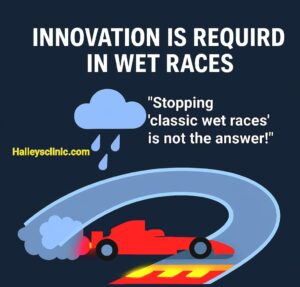What Is the 2026 100% Sustainable Fuel in Formula 1? exclusive

- By Dr. AK Rana
In 2026, Formula 1 will switch to a 100% sustainable fuel — a fuel that delivers all the power of current fuels, but with net-zero carbon emissions.
This doesn’t mean the fuel won’t emit CO₂ when burned.
…
It means that the carbon released will be offset by the carbon used to make the fuel in the first place, creating a closed carbon loop.
…
How Will This Fuel Be Made? The Three Main Sources
1. Carbon Capture Fuel
CO₂ is captured directly from the atmosphere or industrial emissions.
It’s combined with green hydrogen (produced using renewable energy and water) to create synthetic hydrocarbons — basically, artificial petrol.
…
It’s often called e-fuel or synthetic fuel.
2. Biomass Waste Fuel
Made from non-food biological materials like:
Agricultural waste (husks, straw)
Forestry residues (sawdust, wood chips)
Algae or manure
These are fermented or refined into usable hydrocarbons (similar to how ethanol is made).
3. Municipal Waste Derived Fuel
Everyday garbage, plastics, or landfill waste can be chemically processed and transformed into usable fuel.
It helps reduce landfill load and creates a cleaner fuel source.
…
Key point: No fossil fuels involved.
No drilling oil from the ground.
This makes the fuel sustainable, not just less polluting.
…
Why It’s a Big Deal in F1 and Beyond
1. Net Zero Emissions (Carbon-Neutral)
The total carbon released from an F1 car using this fuel will be equal to the carbon that was pulled from the environment to make it. So, no net addition to global CO₂.
2. Same Performance, Better Planet
FIA has committed to making sure the fuel doesn’t reduce performance. It will still:
Power engines over 1000 HP
Survive extreme combustion temperatures
Work with hybrid energy recovery units (ERS)
This proves that going green doesn’t mean going slow.
3. Transferable to Road Cars
Here’s the genius part — this fuel will be compatible with internal combustion engines (ICE) already in use globally.
So, while the world shifts to EVs, millions of cars on the road today can still go green with this fuel.
…
How Does It Fit with the 2026 Power Unit Rules?
In 2026, F1 is not just changing fuel — it’s also completely redesigning the power units:
More electric power: The MGU-K (Kinetic Motor Generator) will triple in power.
No more MGU-H: Simplifies the system, reduces costs, makes it easier for new manufacturers to enter.
Smaller internal combustion engine role: But still essential — so the new fuel must be top-tier.
…
This fuel must:
Burn efficiently
Work with variable ignition timings and high turbo pressures
Not damage high-revving engines under stress
That’s why fuel companies like Shell, Aramco, and ExxonMobil are already developing prototypes for 2026 — in partnership with F1 teams.
F1 as a Global Lab for Green Innovation
F1 isn’t just racing for trophies anymore — it’s racing to become a platform for sustainability innovation.
And unlike electric-only series, F1’s green fuel project is directly applicable to the 1.4 billion ICE vehicles still in use worldwide.
Share your thoughts in the comments.
Stay inspired with Halleysclinic.com
Contact: halleysclinic@gmail.com
Don’t forget to follow our Instagram account https://www.instagram.com/halleysclinic
also read What Fuel Powers the Formula 1 Cars Today? Exclusive






1 thought on “What Is the 2026 100% Sustainable Fuel in Formula 1? exclusive”